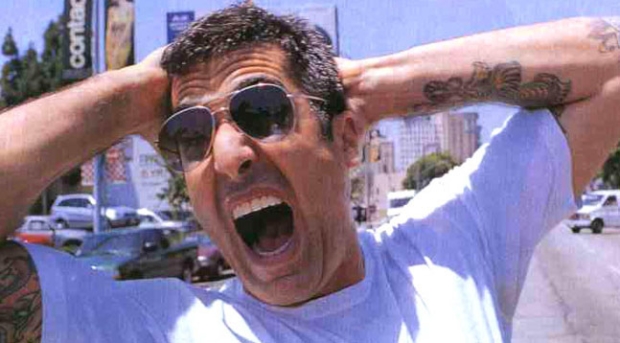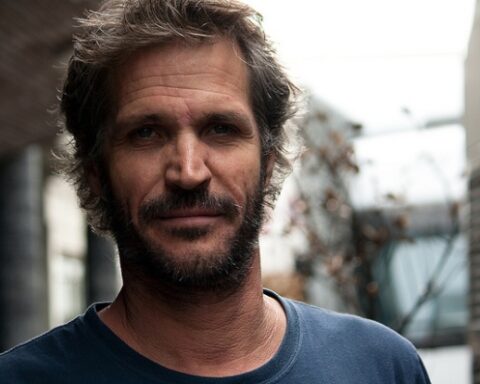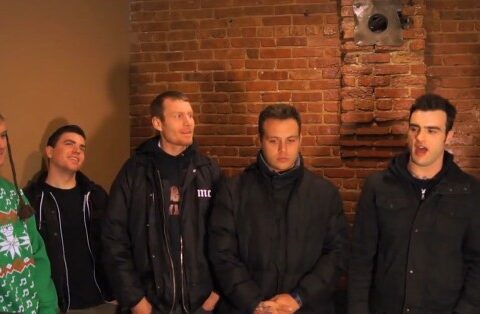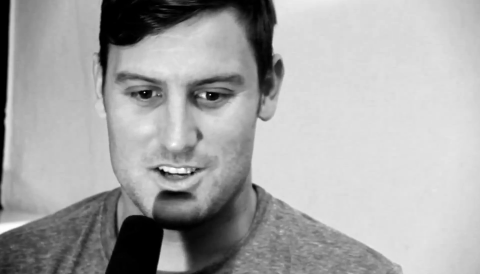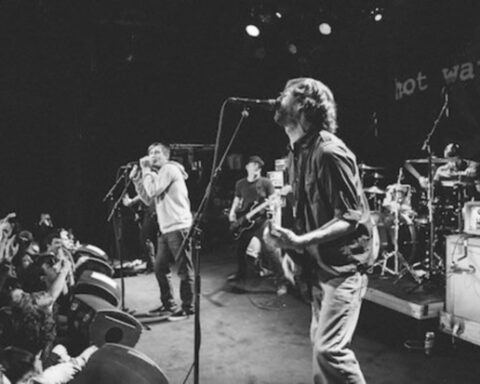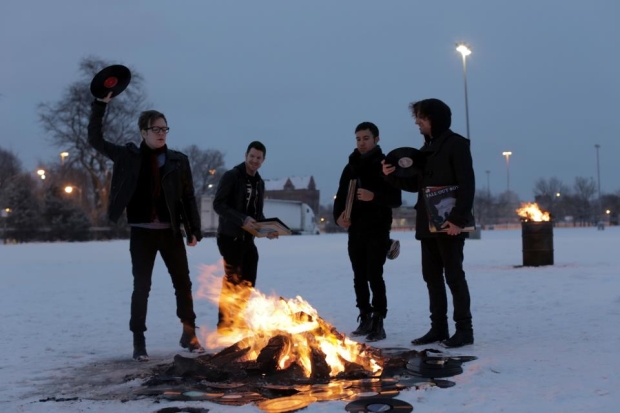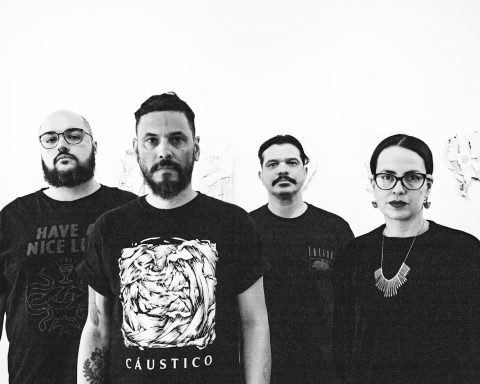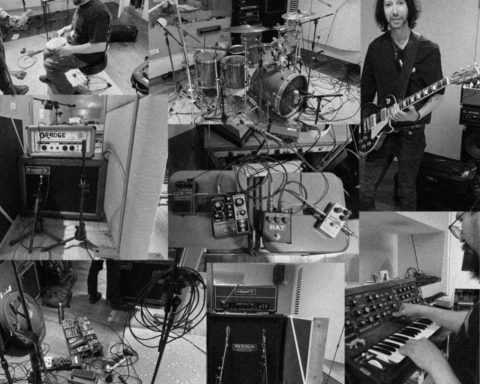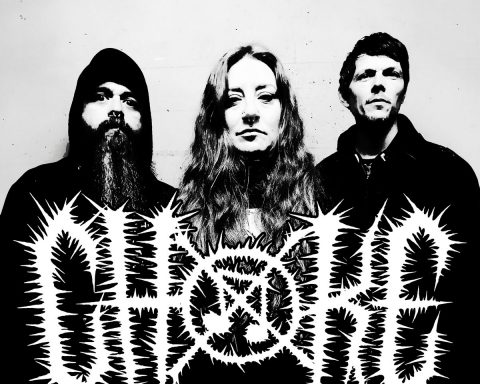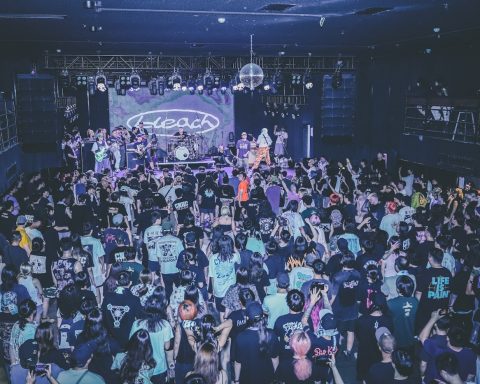Premier Guitar recently conducted an interview with BAD RELIGION guitarist Brett Gurewitz, who talks about the making of their new album “True North”, which arrived two weeks ago.
While recording True North, Bad Religion not only went back to its roots with faster, shorter songs, but you went back to recording on actual tape. Tell us about the process of straddling the analog and digital worlds this time around.
We tracked everything to tape and then dumped it all into Pro Tools and mixed the album digitally. We used the tape machine as a bridge, but the interesting thing about that is, unlike other things you can put between yourself and the ultimate recording medium, tape isn’t a plug-in—it’s really a process. It’s a way of working, because it’s very linear as opposed to being random access. Recording to tape is a more musical way of thinking and communicating, and it’s also a more efficient way of working.
How did that affect the process of recording the guitar parts?
Our goal for every song—which we accomplished—was to record all the instrumentation in one continuous take before dumping it into Pro Tools. We wouldn’t just cut a solid verse, fly it into the computer, and then duplicate it throughout the rest of the song with crossfades. The songs on True North don’t have any crossfades or edits points. To me, that approach of splicing and duplicating music—for our band and any type of guitar-driven music in general—sterilizes the art form. Another positive that we really enjoy with recording to tape is getting the best noise-to-signal ratio, so it gives the recording just a little bit of that old-school tape compression.
You’ve produced a lot of Bad Religion’s catalog, as well as other Epitaph bands over the last 30 years. How does your approach change with your own band?
Well, producing Bad Religion is definitely my favorite thing to produce, because it was the first thing I started working on way back in ’81. Joe Barresi is part of the family now, too—he’s worked on the last three albums now—so it’s just become friends hanging out, doing what we love. The new ingredient or wrinkle this time was that I sat in with him when he mixed True North. On the two previous albums, I left the mixing to Joe, but for this one I went in there and said to him, “We’re looking for a particular old-school sound. I mixed all those old records, how about I take a shot at mixing this album with you?” Joe typically works in the heavier areas of rock, like Tool and the Jesus Lizard, so with mixing True North we focused on not overemphasizing or pushing anything too much. When I work on Bad Religion, or anything for that matter, my goal is to make it seem as realistic and true-to-form as possible. I want you to feel like you’re in the studio when you hear it back through your iPod [laughs].
What are the main guitars you used on True North?
All three of us tend to favor Gibson Les Pauls because they fill the mix a lot better and typically sound aggressive while still being articulate, at least for what we do in Bad Religion. I prefer guitars with shorter scale lengths because they’re easier for me to play.
Another guitar we used quite a bit was a Nash Guitars Telecaster[-style]. I found it to be really punchy, and it lacked a lot of the shrill or brittleness that some Teles can have. We were happily surprised at how well it added to the Les Paul sounds.
In the past, you’ve often bought a new guitar leading into a new album cycle because you view the instrument as a writing partner and motivational tool. What new gear purchases did you make this time?
My new toy this year was a tobacco-burst Fender Kurt Cobain Signature Jaguar. It has a very full, complete sound like a Les Paul, but it also has these crazy, ringing overtones that are caused by the bridge being much more springy than a standard bridge that’s entirely anchored to the body. Those type of overtones are richly harmonic and complemented the tones from the Les Pauls.
One of the guitars you’ve had for a long time is the red, sticker-covered super-strat. What’s the story about that guitar and did it see some time on True North?
Oh yeah, I call that one “the Red Rocker.” That’s a single-pickup Charvel I bought in ’89 while on tour in Boston because mine had gotten stolen the night before. I went into the nearest music store and bought it. Over the years, I’ve just swapped things off it out of necessity. The neck now is an unfinished ESP maple neck with a maple fretboard that has jumbo frets because the old neck played like crap. It went out of tune a lot, so I replaced the stock tuners with some high-quality Schaller tuning machines. I had the tone knob circuitry disconnected, so the signal path is even more direct from the pickup to the amp—I normally leave tone knobs wide open, so it just made sense on this one-pickup monster. And, I also put in a Seymour Duncan JB in the bridge position, which all my Les Pauls have, too. Everything I’ve done to it ended up making it sound like a brighter Les Paul.
The Red Rocker gets on every album. It wasn’t featured that much this time around, but it’s been with me for over 20 years, so it’s paid its dues and deserves some studio time [laughs].
What do you like so much about the Duncan JB versus other humbuckers?
I prefer the JB because of the smooth midrange within the overdriven Marshall sound I like, particularly in the low mids around the 500–600 Hz range. Sometimes other humbuckers—especially newer ones—have such high outputs that you can’t hear the gain stages of the amp as much.
What amplifiers did you record with?
We pretty much exclusively used the Marshall JCM800. Aside from the new guitars, we deliberately tried to keep most of the gear simplistic and reminiscent to our early days, so we just stuck with what we know when it came to amps. We also worked with an older ’70s Marshall JMP, and both heads ran through a Mesa/Boogie 4×12 that has Celestion Vintage 30s.
Why do you prefer Mesa cabs with the Marshall heads?
They have a bigger box that creates a lot more low-end presence and oomph.
In recent shows from the 30th-anniversary tour, you used a Diezel VH4 head. Did that or any other amps make appearances on True North?
I still have the VH4, but I just don’t really like it that much. I know Adam Jones from Tool gets some really dynamic and thick sounds for what they do, but every time I’ve tried it, it just sounds fizzy. It does give you infinite sustain, but I just can’t get the Marshall’s warm, creamy punch out of it. The EVH 5150 III is an amp that I really like and have been using live—as well as on most of the tracks for The Dissent of Man—but I didn’t really use it much on True North.
The rest of this interview can be read here.



